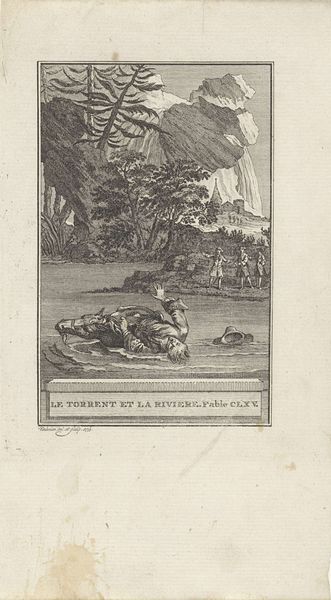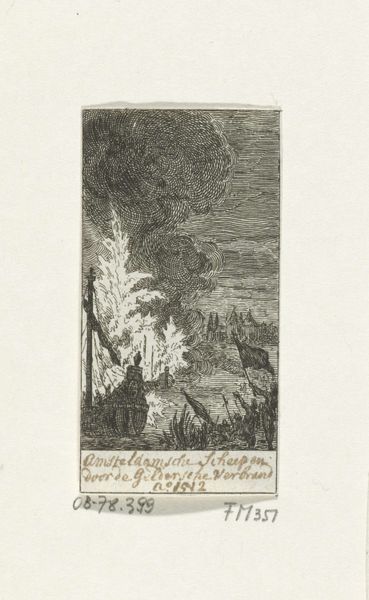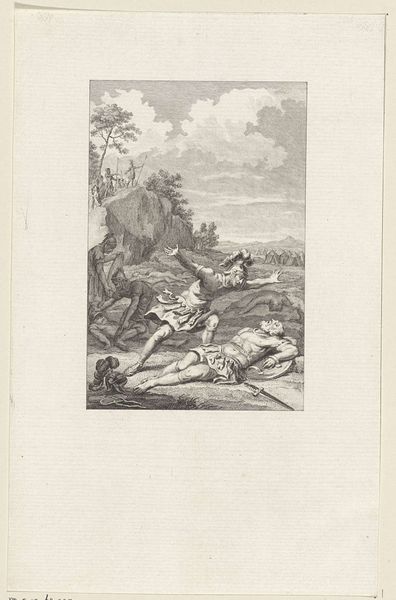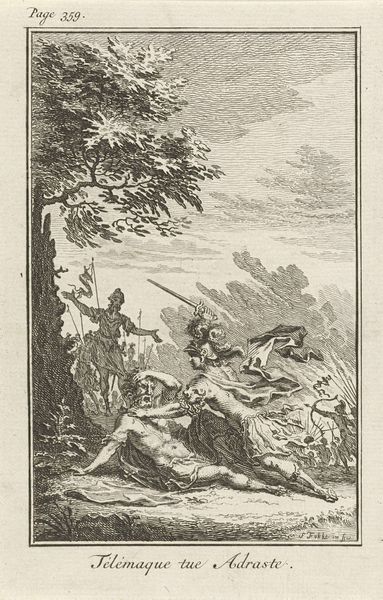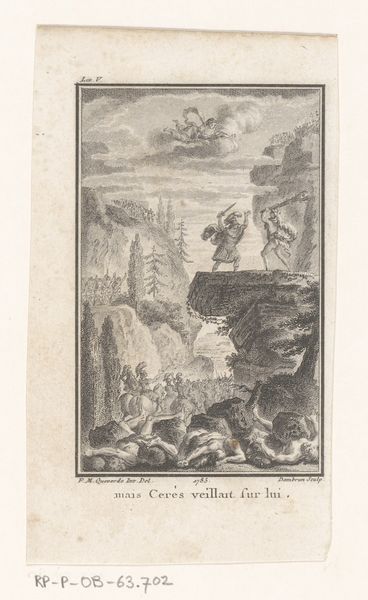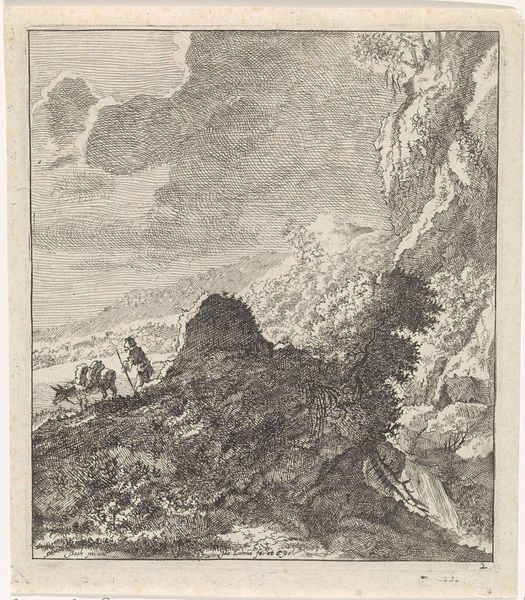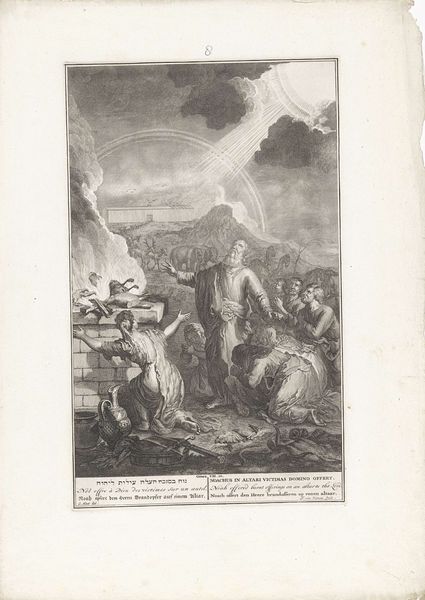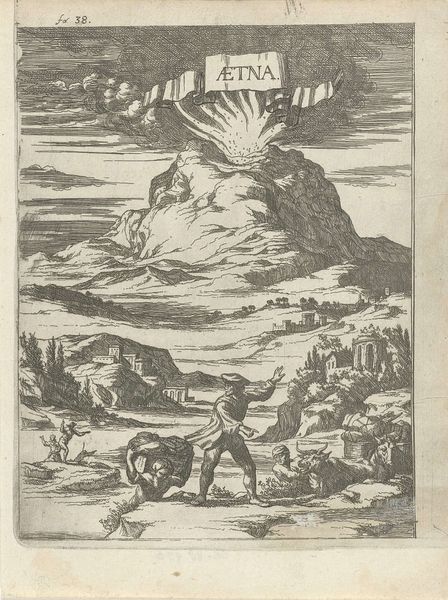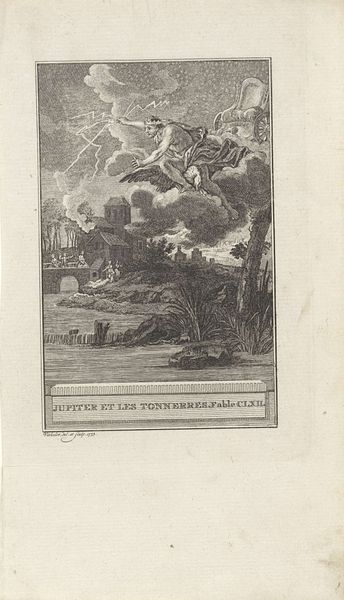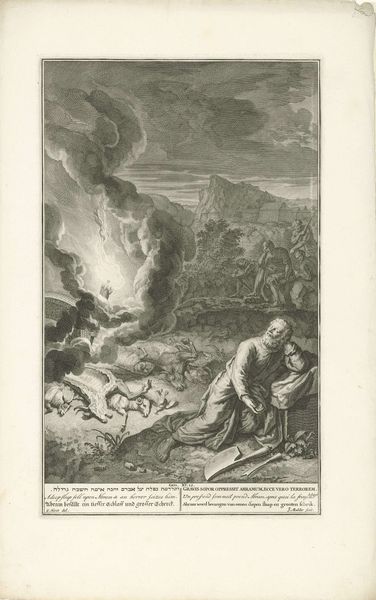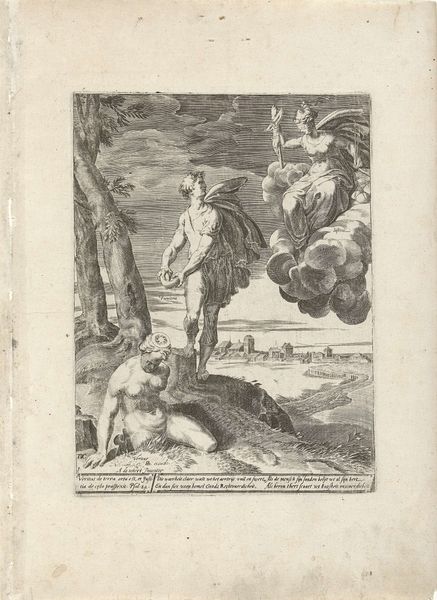
print, etching, engraving
#
neoclacissism
#
narrative-art
# print
#
etching
#
old engraving style
#
landscape
#
classical-realism
#
line
#
history-painting
#
engraving
Dimensions: height 215 mm, width 127 mm
Copyright: Rijks Museum: Open Domain
Curator: This is Reinier Vinkeles’ etching “De rat en de oester,” or "The Rat and the Oyster," created in 1773. Editor: There’s a whimsical, slightly unsettling quality to it. The composition is strange—a sort of classical landscape warped by caricature. Curator: Absolutely. The materiality of printmaking is essential here. Consider the social context: prints made art accessible, a form of visual mass production. It's not just about Vinkeles' skill, but about the engraving’s function as a means of disseminating ideas, stories. Editor: Which leads us to consider what those stories might be and for whom. With its precise lines and Neoclassical leanings, the work reflects the Enlightenment’s emphasis on reason, while the animal fable format opens itself to allegorical readings, specifically addressing contemporary political or social failings. Curator: Precisely. Look closely—the sharp lines, the precision, speak to the labor and skill involved in the engraving process itself. What tools were employed? Who trained Vinkeles, and what workshops were crucial to its production? And we can also think about the supply chain, even in the 18th century. Editor: We can examine those networks through a contemporary lens by also considering who *doesn’t* have access to this image and these systems of exchange and artistic production. What narratives and figures are intentionally or unintentionally excluded? Curator: By doing so we create more depth. The fable itself speaks to power dynamics and perhaps the folly of greed. Vinkeles highlights themes related to how one acquires resources – and by extension, what it means to either control or become a controlled source for consumption. Editor: Yes! It’s an open ended fable, as those classical ones often are—leaving space for its viewers to engage in this dialogue of resource allocation as it applied in 1773 but even today. A bit unsettling that such old material can be applied even in our time. Curator: This work isn't simply about technical mastery or aesthetic beauty. By analyzing production, materiality, and social context, it gives access to larger societal infrastructures as much today as it did hundreds of years ago. Editor: I’ll remember that next time I see one of these. Let's move on.
Comments
No comments
Be the first to comment and join the conversation on the ultimate creative platform.
